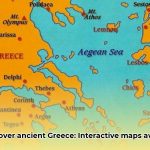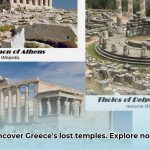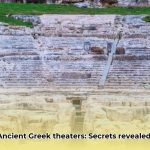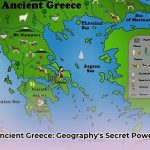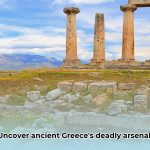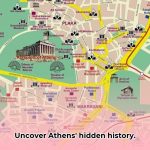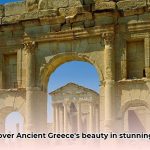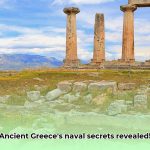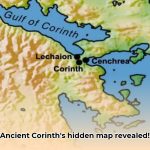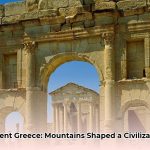Imagine ancient Greece, not as the land of mighty heroes and dazzling temples, but a world plunged into relative obscurity. That’s the Greek Dark Ages, a mysterious period lasting roughly from 1200 to 800 BC. It’s a time when a great civilization crumbled, leaving behind fewer clues than we have for the glorious times that came after. This article explores the big questions surrounding this shadowy era: What caused the Bronze Age to fall apart? Was it a sudden invasion, or a slower decline? What happened to the writing system? How did people live during this time? We’ll look at clues from archaeology, ancient stories, and the exciting rediscovery of the Greek alphabet to paint a picture of this pivotal period in history—a time of both loss and remarkable resilience. We will also consider recent academic discourse challenging the “Dark Age” label itself. For more on historical turning points, see this helpful resource: Ancient History Turning Points.
Navigating the Shadows: Defining the Greek Dark Ages
Imagine a world where once-great cities lay silent, their bustling marketplaces replaced by overgrown fields. This is the picture that emerges when we look at Ancient Greece’s Dark Ages, a period shrouded in mystery and marked by significant change. It wasn’t a sudden plunge into darkness, but a complicated transition spanning several centuries, roughly from 1200 to 800 BC, leaving historians with a challenging puzzle to solve. This era, often overlooked in favor of its more glamorous successors, holds vital clues to understanding societal resilience, innovation, and the cyclical nature of civilizations.
The Bronze Age Collapse: Unraveling Societal Shifts
The Dark Ages didn’t just pop up; they followed the dramatic collapse of the Bronze Age, a period of advanced civilization in Greece. Why did this happen? The answer isn’t simple, and experts offer many theories. Some point to natural catastrophes such as earthquakes that occurred around 1200 BCE impacting infrastructure. Others suggest climate change – perhaps prolonged droughts or other environmental shifts that led to widespread famine and social unrest. Internal conflicts or power struggles within the Mycenaean kingdoms may have contributed, leading to instability and warfare. Some even propose that external forces and the impact of invasions by the Sea Peoples played a role. It’s likely a combination of factors that tipped the scales, leading to widespread chaos and the disintegration of established societies. Imagine the disruption: established trade routes collapsing, once-powerful kings losing their grip, and widespread societal anxiety.
The Vanishing Script: Loss of Linear B and its Implications
One of the most significant losses during this period was the disappearance of Linear B, the writing system used by the Mycenaeans. This loss significantly limits our understanding of the Bronze Age itself, let alone what followed. It’s like losing a historical instruction manual—without written records, our knowledge gaps become enormous. We have to rely heavily on what archaeologists dig up, and on the hints and clues contained within later oral traditions that managed to survive the upheaval. Furthermore, the loss of administrative records previously kept in Linear B crippled the redistributive palace economy which likely exacerbated the widespread famine.
The Dorian Enigma: Migration, Invasion, or Transformation?
The role of the Dorian people in the Dark Ages is another point of contention. Were they invaders who conquered the existing population, bringing about a complete societal revamp? Or was their influence more gradual and less dramatic, perhaps blending with pre-existing cultures? Some historians suggest a large-scale migration from the north, while others believe the transition was more of an internal evolution within existing Greek societies. It’s possible that both migration and internal shifts played a part, contributing to the overall change. The evidence is complex and often debated, showing us how difficult it can be to decipher the past from fragmented clues. Jonathan Hall, a leading scholar on the period, suggests that the collapse of the Mycenaean political and economic system created a climate of instability, prompting people to seek new homes and livelihoods elsewhere.
Decline and Resilience: Population and Economic Transformations
Archaeological evidence shows a notable decline in both population and economic activity during this time. Settlements became smaller, trade networks dwindled, and the production of elaborate crafts significantly reduced. Imagine houses becoming simpler, less emphasis placed on luxury goods, and daily life becoming more austere. This wasn’t caused by a single event, but by numerous factors potentially including widespread famine, disease, and the disruption of established trade routes. It was a time of hardship that significantly shaped the course of Greek history. However, it’s important to note that not all regions experienced decline at the same rate or to the same degree. Some areas, like Attica and Euboea, appear to have weathered the storm better than others.
Lefkandi’s Legacy: Glimpses into a Tumultuous Era
Fortunately, archaeology offers us glimpses into this turbulent period. Sites like Lefkandi, in Euboea, reveal details about daily life, burial practices, and social structures. These discoveries offer a more nuanced perspective, showing that while there was undeniable decline and upheaval, life still continued, and societies gradually adapted to the new circumstances. The “Heroon” at Lefkandi, a large structure containing rich burials, suggests the presence of a powerful elite and ongoing trade connections with the Eastern Mediterranean.
Echoes of the Past: Homeric Epics and Ancient Values
Though written much later, the epic poems of Homer— The Iliad and The Odyssey— provide valuable insights into the values, beliefs, and social structures that might have persisted or re-emerged during the Dark Ages. Though not a firsthand account, they offer echoes of the past, narrating stories that likely reflected the memories and traditions passed down orally through generations. These poems help bring the people and culture of the Dark Ages to life, despite the absence of contemporary written records. Scholar Thomas R. Martin argues that the behavioral code portrayed in the Homeric poems reflects values established in Dark Age society.
A Dawn of Literacy: The Adoption of the Alphabet
The greatest transformation came with the adoption of the Greek alphabet, around the 8th century BC. Adapted from the Phoenician alphabet, this new writing system revolutionized communication and marked a significant turning point, ushering in a new era of literacy and eventually leading to the remarkable achievements of Classical Greece. With the renewed ability to write, history, laws, literature, and countless other things could be recorded and passed down, creating a lasting legacy and completely changing the course of the civilization’s trajectory.
A Lasting Impact: Reflections on Resilience and Rebirth
The Greek Dark Ages were a period of significant transition, a reminder that civilizations are not static; they experience both periods of decline and impressive rebounds. This era’s complexities teach us much about societal resilience, adaptation, and the pivotal role that both tradition and innovation play in shaping the trajectory of cultures. By studying this pivotal period, we can better understand the challenges societies face and gain insights into how humans overcome hardship and reinvent themselves. The questions raised by this era continue to inspire debate and research, highlighting the ongoing quest for a complete understanding of this fascinating period in history. As archaeologist James Whitley notes, the concept of a “Dark Age” is partly a construct based on our knowledge of the literate civilizations that preceded and succeeded it.
How Did the Dorian Migration Impact the Greek Dark Ages Economy?
Key Takeaways:
- The Mycenaean civilization’s collapse around 1200 BCE marked the beginning of the Greek Dark Ages, a period of significant societal and economic upheaval.
- The role of the Dorian migration in this collapse remains a subject of intense debate among scholars, with some arguing for a violent conquest and others suggesting a more gradual process of migration and integration.
- Archaeological evidence suggests a widespread decline in population and economic activity during the Dark Ages. The impact of the Dorian migration on this decline is complex and not fully understood.
- The loss of Linear B script resulted in a significant gap in our understanding of the period, making it difficult to definitively assess the economic effects of the Dorian migration.
- Despite the economic downturn, the Dark Ages were not a period of complete stagnation. Archaeological sites like Lefkandi reveal a degree of continuity and adaptation in societal structures.
- The eventual adoption of the Greek alphabet marked a turning point, leading to a resurgence of literacy and economic growth. This revitalization laid the foundations for Classical Greece.
The Crumbling Mycenaean World and Trade Route Disruptions
The Mycenaean civilization, the apex of Bronze Age Greece, met a dramatic end around 1200 BCE. Palaces burned, cities fell silent. What caused this collapse? Was it internal strife, external invasions (the infamous “Sea Peoples”), climate change, or a combination? This remains a hotly debated topic. Disruptions to trade routes played a key role in accelerating this societal decline. A systems collapse involving a confluence of these factors seems increasingly likely to scholars such as Eric Cline.
The Arrival of the Dorians: Analyzing Economic Effects
Into this chaos stepped the Dorians. But how did the dorian migration impact the greek dark ages economy? Did they conquer Greece in a brutal invasion, as tradition suggests, or was their arrival a more gradual process of migration and integration? Evidence is fragmented, leading to differing interpretations. The lack of clear-cut archaeological evidence for widespread destruction caused by the Dorians complicates the issue. Some scholars propose a more complex picture: internal weaknesses in Mycenaean society created vulnerabilities exploited by migrating Dorian groups, leading to a gradual transformation rather than a swift takeover, creating internal conflict. It is also possible that some groups identified as “Dorians” were, in fact, displaced Mycenaeans themselves.
Economic Fallout: Assessing Production and Prosperity
Regardless of the Dorians’ role, the Greek Dark Ages witnessed a significant economic decline. Trade networks withered, leading to decreased prosperity and a general simplification of material culture. Population centers shrank. Agricultural production likely dropped as sophisticated irrigation systems and centralized administration vanished. How did the dorian migration impact the greek dark ages economy in this context? Did their migration hasten this decline, or did they adapt to and contribute to the new circumstances? It’s likely a combination of both. The influx of new populations may have initially strained resources, but also brought new skills and technologies that eventually contributed to economic recovery.
Lefkandi: Continuity Amidst the Dark Ages
Archaeological sites offer glimpses into this period. Lefkandi, on the island of Euboea, showcases the complex realities of the Dark Ages. It wasn’t a wasteland; rather, society adapted, albeit with reduced resources and a simpler lifestyle. It is important to remember that Lefkandi may not be representative of all regions of Greece during this period. The evidence suggests a degree of continuity alongside change. The site reveals a surprisingly sophisticated burial practice, indicating that some aspects of social organization persisted through the transition.
Linear B’s Absence: Oral Tradition and Economic Challenges
The loss of Linear B, the Mycenaean script, plunged Greece into a period of limited written records. This makes understanding the economic realities of the Dark Ages incredibly challenging. However, oral tradition thrived. The Homeric epics, though composed centuries later, offer invaluable, albeit filtered, insight into the values, social structures, and perhaps even economic practices of the time. They hint at a world recovering slowly, where individual heroes and their exploits took center stage. The works of Hesiod also provide valuable insights into agricultural practices and social hierarchies of the time.
Literacy’s Revival: A New Dawn for Economy and Record-Keeping
The adoption of the Greek alphabet, adapted from Phoenician script, marked a revolutionary turning point. Literacy returned, facilitating the recording of transactions, laws, and stories. This marked the end of the Dark Ages, a period often viewed as a “dark” age only due to its limited written records rather than complete societal collapse. The revival of literacy paved the way for a burgeoning economy and the rise of Classical Greece, a golden age built upon the foundations, however shaky, of its predecessor. The establishment of new trade networks and the growth of city-states further fueled economic recovery.
Lefkandi Excavations: Unveiling Daily Life During the Greek Dark Ages
Key Takeaways:
- Lefkandi’s archaeological finds challenge the traditional notion of a uniform “Dark Age” collapse.
- The site reveals a surprisingly complex society with sophisticated architecture, metalworking, and trade networks.
- The “Toumba” building, a monumental structure, raises questions about societal organization and religious practices.
- Lefkandi’s burials offer unmatched insights into the lives and status of individuals during this period.
- The excavations highlight Euboea’s importance as a trading hub, defying the image of widespread isolation.
Unraveling the Bronze Age Demise
The Bronze Age collapse, around 1200 BC, wasn’t a sudden blackout; it was a protracted twilight. Think of it like a slowly fading light, not a flicked switch. Societies across the Aegean crumbled, their intricate systems unraveling. Linear B script, the language of the Mycenaeans, vanished, leaving a significant gap in our historical understanding. Was it a gradual erosion of knowledge or a cataclysmic event? We simply don’t know for sure. The loss of key resources such as copper and tin, essential for bronze production, may have further destabilized the Mycenaean economy.
Migration, Transformation, or Internal Conflicts?
The arrival of Dorians is often implicated in the Dark Ages. Were they invaders who swept away the old order? Or did existing communities simply undergo significant internal transformations? Archaeological evidence paints a complicated picture, suggesting both migration and internal societal change played a role. It’s like a puzzle with missing pieces, and Lefkandi helps us fill in some of the gaps. The emergence of new social structures and political organizations also contributed to the transformation of Greek society during this period.
Lefkandi: A Beacon of Sophistication
Lefkandi Excavations: Unveiling Daily Life During the Greek Dark Ages have significantly altered our understanding of this era. Located on the island of Euboea, this site showcases a thriving community that didn’t adhere to the “dark” stereotype. We see sophisticated architecture, like the massive “Toumba” building—a structure that has puzzled scholars for decades. Was it a temple, a palace, or something else entirely? Its presence challenges the idea of widespread decline. The “Heroon” contained the burials of what is believed to be a warrior and a woman adorned with gold jewelry, further highlighting the wealth and status of Lefkandi’s elite.
Glimpses into Thriving Trading Hubs
Lefkandi’s cemeteries reveal remarkable insights into daily life. Burials, rich in grave goods, showcase wealth and social distinctions. The famed “Euboean Warrior-Trader” is a prime example—a powerful figure who highlights the community’s engagement in trade. Imported luxury items from Egypt and the Levant demonstrate extensive trading networks. Imagine the bustling marketplaces, the skilled artisans, and the vibrant intercultural exchanges. Lefkandi wasn’t isolated; it was connected. Cypriot metalwork, for example, has been found in Lefkandi, indicating active trade relations.
Literacy’s Emergence: Rebirth and Innovation
The emergence of the Greek alphabet around 750 BC marked a turning point. This innovation, fostered by increased literacy, ushered in a new era of recording and sharing knowledge. This invention helped to change the narrative of this era. The seemingly “dark” age was, in essence, a transformative period laying the groundwork for Classical Greece. The adoption of the alphabet facilitated the codification of laws, the writing of literature, and the development of new forms of political expression.
Lefkandi’s Enduring Impact on Our Understanding
The discoveries at Lefkandi are reshaping our understanding of the Greek Dark Ages. The site reveals societal complexities and resilience that directly challenge prior assumptions. It wasn’t simply an age of decline, but a period of transformation and adaptation. This is more than just an archaeological site; it’s a window into a captivating chapter of human history, one that’s constantly being rewritten. The ongoing research at Lefkandi continues to yield new insights into the lives and culture of the people who lived during this pivotal period.
Economic Transformations in Post-Bronze Age Greece: A Regional Analysis
Key Takeaways:
- The transition from the Late Bronze Age (LBA) to the Early Iron Age (EIA) in Greece wasn’t a complete agricultural collapse. Farming persisted, adapting to new socio-political realities.
- Regional variations in farming intensity existed, even before the Bronze Age collapse. Some areas were more heavily invested in agriculture than others.
- The extent of palatial control over agriculture in the LBA remains debated. Its decline undoubtedly caused disruption, but the impact on farming itself is unclear.
- Aridity likely stressed agricultural production and contributed to broader societal instability. However, its precise role remains a topic of ongoing debate. The timing of the drought arguably complicates the situation.
- Archaeological evidence offers mixed signals. The story of the Greek Dark Ages and its economic transformations shifts depending on the lens applied.
The Bronze Age’s Agricultural Disruption
The cataclysmic Bronze Age collapse, around 1200 BCE, dramatically reshaped the Greek landscape. Palatial systems, the engines of Bronze Age economies, crumbled. But did agriculture vanish with them? The evidence suggests a more nuanced picture. While centralized control faded, farming continued. However, the intensity and organization of agriculture likely underwent significant changes. Did the shift to smaller, more localized farming systems reflect a purely economic response to the collapse, or were other factors at play? The breakdown of centralized storage and distribution systems likely led to food shortages and localized famines in some areas.
Regional Farming Variability
A fascinating aspect of this period is the regional variations in agricultural practices. Northern Greece, for example, displays evidence of low-input farming systems. This differed from the possibly more intensive agriculture practiced in other areas during the LBA. Why this regional diversity? Access to resources, pre-existing social structures, and environmental factors all likely played a role. It presents a compelling case for a regional analysis. Were the areas that had more significant economic upheaval also the areas with the most drastic shifts in agriculture? The picture is far from complete. The development of new irrigation techniques or the introduction of new crops may have also played a role in regional variations.
Climate Change Impact
Paleoclimate data points to a period of increased aridity in the Eastern Mediterranean coinciding with the Bronze Age collapse and the ensuing Dark Ages. Increased dryness would likely have impacted crop yields, exacerbating existing societal stresses. But did climate change cause the collapse, or did it merely act as a catalyst, accelerating pre-existing processes? The interplay between social upheaval and environmental change still demands further research. Was this drier climate the straw that broke the camel’s back for already stressed systems, or were there other factors? The complexity of this issue is further highlighted by debates over the precise timing and duration of the drought.
Lefkandi and Rural Resilience
Archaeological sites like Lefkandi offer vital insights into life during the Greek Dark Ages. These sites showcase a combination of continuity and change in material culture. While grand palatial structures disappeared, villages persisted, demonstrating the resilience of rural life. Lefkandi provides a glimpse into this post-palatial world, showing a society adapting its economic strategies but not abandoning agriculture. Was this resilience a hallmark of the entire Aegean world, or just certain, more resourceful regions? The development of new tools and techniques for farming may have also contributed to the resilience of rural communities.
Adaptability of Agricultural Practices
What becomes clear is the remarkable persistence of agricultural practices. Cereals like wheat and barley remained staple crops. This continuity suggests the fundamental techniques of farming remained largely unaffected by the political and social upheavals that marked the Bronze Age collapse. This doesn’t mean that these changes weren’t significant. It suggests a deep-seated adaptability within Greek agriculture, a resilience that allowed it to weather the storm. How exactly did these farming communities adapt their systems after the collapse of larger centralized systems? The shift to iron tools, which were more readily available than bronze, may have also impacted agricultural practices.
From Linear B to Oral Tradition: Understanding Societal Values
The loss of Linear B, the script of the Mycenaean civilization, further complicates our understanding of economic transformations in post-Bronze Age Greece. This loss represents a significant break in the written record, forcing us to rely more heavily on archaeological evidence and later literary sources, like the Homeric epics which reveal much about societal values but little about detailed economic practices. Does the transition to oral tradition signify a broader shift in economic and societal organization? The reliance on oral tradition may have also led to the development of new forms of social memory and cultural transmission.
- Discover Ancient Greece Weapons: A Comprehensive Guide to Military Technology - August 8, 2025
- Discover Ancient Greek Swords: A Comprehensive Guide - August 8, 2025
- Explore Ancient Athens: Unveiling the City’s Secrets Through Maps - August 8, 2025


